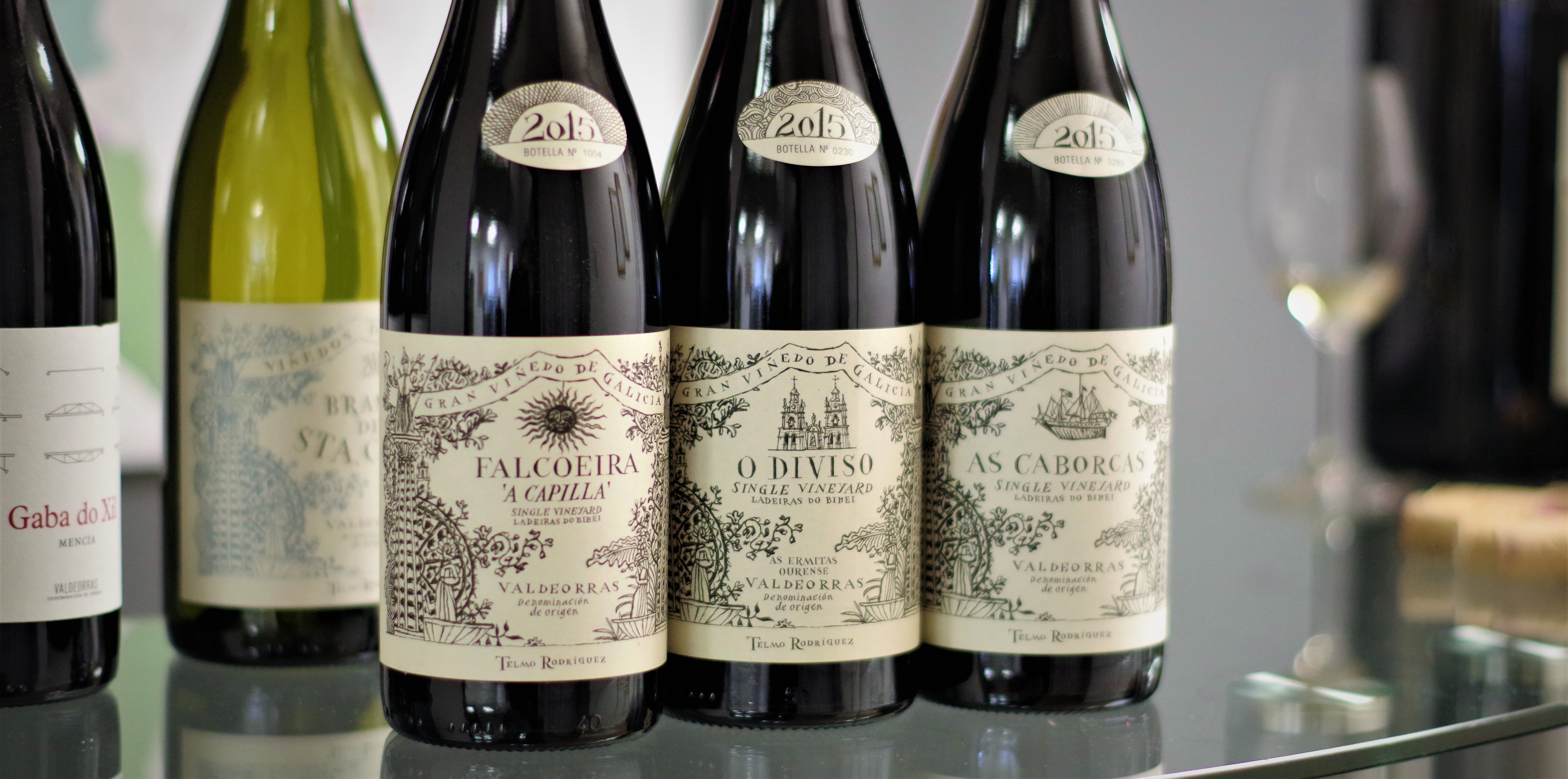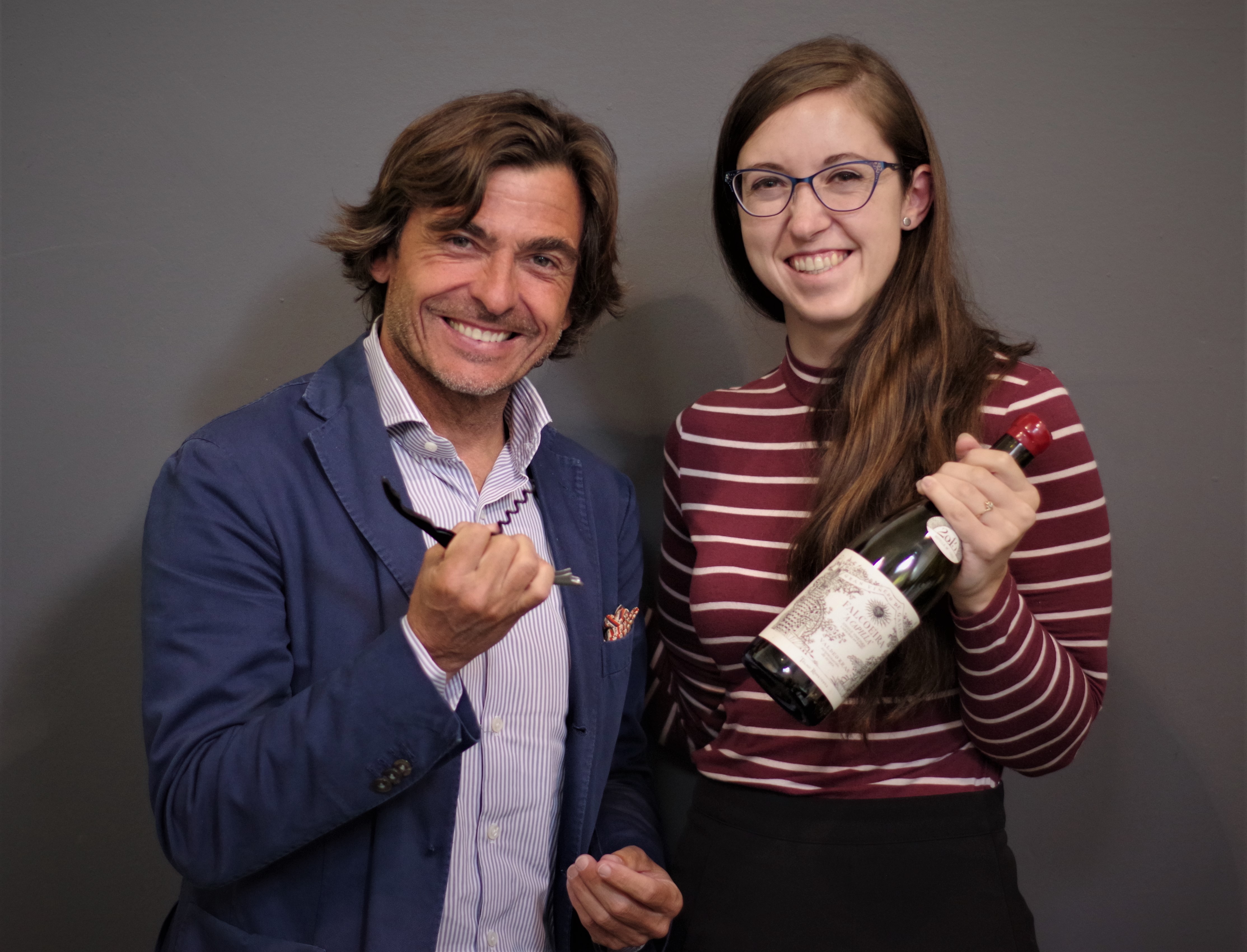Telmo Rodriguez is considered as one of the great Spanish winemakers, one filled with ambition that brings innovation with the likes of Alvaro Palacios and others. From his home of La Rioja, he traveled around Spain, mostly in the North eastern part, to research winemaking and find ancient, distinguished vineyards to resuscitate.
Telmo, with his love of story-telling, brought up an important point. When we think of Spanish wines, what comes to your mind first? Often, at least from a consumer point of view, Spain’s associated with big brands, making robust, heavy wines, focused on wood and development. So much that wood is often used to hide the original flavors of the wine. Hopefully, this represent only part of Spain’s production, yet it’s often the very image or representation of the country. It may be time to approach Spanish wines with more of an open mind. It’s a whole country that encompasses many styles, expressions, varietals, climate, and soils. It might be time to switch our focus to more specific image and comprehensions, like we do with the different regions of France or Italy. French wines are not just characterized by Bordeaux; Italian wines are not limited to Tuscans; Spanish wines are not bonded to aged Rioja. Wine lovers and enthusiasts can easily name and differentiate the different villages of Beaune, yet they can’t name a single Lieux-dits within Rioja, any sub-regions of Galicia nor any grape varieties beside Tempranillo and maybe Garnacha.
For Telmo Rodriguez: “The future of Spain is in its past. “There’s an important heritage that have been forgotten and replaced by ‘Enhancing Varietals’ like Cabernet sauvignon and Merlot in the 1980s. 70 years ago, you could find as much as 50 different local grape varieties, often mixed and co-planted.” Without necessarily wanting to follow the new ‘forgotten varietals’ trend, it’s still part of vineyards history and many regions historical marks and personality. He’s taken an interest especially in the region of Galicia for its unique climate, far from the warm idea of continental Spain. Galicia has a mix of Atlantic and continental and a much cooler climate. In some vintages, harvest has even been done under a snowing sky. It’s mostly known for its white wine production, especially Albariño in Rias Baixas, but there are some lovely red surprises, with a tart and fresh approach that may be found too!
Ladeiras do Xil is the Galician vineyards of Telmo Rodriguez, located in the Valdeorras area in between Ribeira Sacra to the west and Bierzo to the east. They’ve been working since 2002 with well-established families of winegrowers who has been working impossible and complicated vineyards for generations. From soft and delicate white wines based on the local Godello grape to incredibly complex and aromatic field blend reds. Ladeira do Xil was in a way, a rebirth of the Valdeorras and Santa cruz potential as well as original co-plantation tendencies including varieties such as Mencia, Merenzao, Sousón, Treixadura, Godello, Brencellao, Doña Blanca, Palomino, etc.
The specific parcels of the vineyards have been developed in very different ways for unique expressions. The ‘As Caborcas’ Parcel is the oldest one and hasn’t been replanted at all. It’s an old field blend that has remained the same forever. It shows an incredible complexity of spices and deep fruits. It’s aromatic, delicious with a lingering freshness embellished by tarter notes on the palate.
O Diviso shows darker and riper than As Caborcas. It’s a mix of old vines and new ones since some of them had to be replanted including some of the Alicante that was on the parcel. A burst of fruits & spices that felt like Espelette pepper dark bitter chocolate.
Falcoeira was an esteemed parcel in Santa Cruz. All the elders of the village would praise its merits. It was in such a desperate state that it took 6 years to replant and rebuilt it. “It was a Nightmare!†Telmo says. It may have taken some time, but the wine is showing splendidly: balanced, bright, tasteful with a mouth filling, coating aspect which gives length. The spices of the other parcels are replaced by earthy tones with dark roasted coffee, black beans and roasted nuts.
Telmo Rodriguez РUne question sur la fa̤on dont nous connaissons vraiment (ou abordons) les vins espagnols
Telmo Rodriguez est considéré comme l’un des grands viticulteurs espagnols, rempli d’ambition et d’innovation comme Alvaro Palacios et tant d’autres. Depuis son domicile de La Rioja, il a parcouru l’Espagne, principalement dans la partie nord-est, pour faire des recherches sur la vinification et trouver d’anciens vignobles distingués à réanimer.
Telmo, avec son amour de la narration, a soulevé un point important. Quand on pense aux vins espagnols, que pensez-vous en premier? Souvent, du moins du point de vue du consommateur, l’Espagne est associée à de grandes marques qui produisent des vins robustes et lourds, axés sur le bois et le développement. A tel point que le bois cache souvent les saveurs originales du vin. Heureusement, cela ne représente qu’une partie de la production espagnole, mais c’est souvent l’image même ou la représentation du pays. Il est peut-être temps d’aborder les vins espagnols avec un esprit plus ouvert. C’est un pays entier qui englobe de nombreux styles, expressions, cépages, climat et sols. Il serait peut-être temps de nous concentrer sur une image et une compréhension plus spécifique, comme nous le faisons avec les différentes régions de France ou d’Italie. Les vins français ne sont pas seulement caractérisés par Bordeaux; Les vins italiens ne sont pas limités aux toscans; Les vins espagnols ne sont pas liés à la Rioja vieillissante. Les amateurs de vin peuvent facilement nommer et différencier les différents villages de Beaune, mais ils ne peuvent nommer un seul lieu-dit dans la Rioja, aucune des sous-régions de Galice ni aucun cépage autre que le Tempranillo et peut-être le Garnacha.
Pour Telmo Rodriguez: «L’avenir de l’Espagne est dans son passé.» Un héritage important a été oublié et remplacé par «des cépages améliorateurs» comme le cabernet sauvignon et le merlot dans les années 1980. Il y a 70 ans, vous pouviez trouver jusqu’à 50 cépages locaux différents, souvent mélangés et co-plantés. Sans vouloir forcément suivre la nouvelle tendance des «cépages oubliés», elle fait toujours partie de l’histoire des vignobles et de nombreuses régions et marques historiques. Il s’est particulièrement intéressé à la région de Galice pour son climat unique, loin de l’idée chaleureuse de l’Espagne continentale. La Galice a un mélange de l’Atlantique et du continent et un climat beaucoup plus frais. Dans certains millésimes, la récolte a même été effectuée sous un ciel de neige. Elle est surtout connu pour sa production de vin blanc, en particulier l’Albariño de Rias Baixas, mais il y a de belles surprises rouges, avec une approche acidulée et fraîche qui peut être trouvée aussi!
Ladeiras do Xil est le vignoble galicien de Telmo Rodriguez, situé dans la zone de Valdeorras, entre Ribeira Sacra à l’ouest et Bierzo à l’est. Ils travaillent depuis 2002 avec des familles bien établies de vignerons qui travaillent depuis des générations sur des vignobles impossibles et compliqués. Des vins blancs doux et délicats basés sur le raisin Godello local à des mélanges incroyablement complexes et aromatiques. Ladeira do Xil était en quelque sorte une renaissance des tendances potentielles et originales de la plantation de Valdeorras et Santa cruz, y compris des variétés telles que Mencia, Merenzao, Sousón, Treixadura, Godello, Brencellao, Doña Blanca, Palomino, etc.
Les parcelles spécifiques des vignobles ont été développées de manières très différentes pour des expressions uniques. La parcelle «As Caborcas» est la plus ancienne et n’a jamais été replantée. C’est un vieux mélange variété co-planté qui est resté le même depuis toujours. Il montre une complexité incroyable d’épices et de fruits profonds. Il est aromatique, délicieux avec une fraîcheur persistante agrémentée de notes plus acidulé en bouche.
« O Diviso » se montre plus sombre et plus mûr que As Caborcas. C’est un mélange de vieilles vignes et de nouvelles, car certaines d’entre elles ont dû être replantées, y compris une partie de l’Alicante qui se trouvait sur la parcelle. Un éclat de fruits et d’épices qui ressemble à du chocolat noir amer au piment d’Espelette.
Falcoeira est une parcelle estimé à Santa Cruz. Tous les anciens du village en vantaient les mérites. Elle était dans un état désespéré, tant qu’il a fallu 6 ans pour replanter et reconstruire. «C’était un cauchemar», dit Telmo. Il a peut-être fallu un certain temps, mais le vin se montre splendidement: équilibré, brillant, de bon goût avec un remplissage en bouche, aspect qui donne de la longueur. Les épices des autres parcelles sont remplacées par des tons terreux avec du café torréfié foncé, des haricots noirs et des noix grillées.

